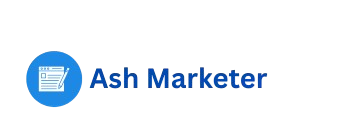Introduction:
Artificial Intelligence (AI) is no longer a concept reserved for science fiction or research labs. It has become a central force driving innovation, reshaping industries, and transforming the global workforce. From customer service chatbots to predictive analytics and autonomous systems, AI is changing how tasks are performed, how decisions are made, and what skills are needed in the workplace.
As businesses adopt AI to gain efficiency and competitive edge, it is crucial to examine its implications for employment, job design, skills development, and ethical responsibility. This article explores the evolving relationship between AI and the future of work.
1. Understanding AI in the Workplace.
Artificial Intelligence (AI) refers to the simulation of human intelligence in machines that are programmed to think, learn, and make decisions. Common types of AI in business include:
Machine Learning (ML) Algorithms that improve with data
Natural Language Processing (NLP) Understanding and generating human language
Computer Vision Interpreting visual information
Robotic Process Automation (RPA)Automating repetitive tasks
These technologies are increasingly used in fields such as finance, healthcare, logistics, marketing, and education.
2. How AI Is Transforming Jobs and Industries.
a. Automation of Routine Tasks.
AI automates repetitive, rule-based tasks, such as data entry, invoice processing, and customer inquiries. This reduces human error, increases speed, and lowers costs.
b.Enhancing Human Capabilities.
AI tools support employees by providing insights, suggestions, and predictions—helping them make smarter, faster decisions.
Example: In healthcare, AI assists doctors in diagnosing diseases by analyzing scans and medical histories more accurately.
c. Creating New Roles.
AI creates new job categories such as AI trainers, data analysts, ethical AI officers, and machine learning engineers.
d. Reshaping Existing Roles.
Jobs are being redefined, with a growing emphasis on creative thinking, emotional intelligence, and digital fluency.
3. Opportunities Presented by AI.
Increased Productivity: AI helps businesses deliver faster results with fewer resources.
Cost Savings: Reduces the need for manual labor in repetitive functions.
24/7 Operations: AI systems can work continuously without fatigue.
Personalization: Enables tailored customer experiences based on real-time data.
Smarter Decision-Making: AI analytics reveal patterns and insights that humans might overlook.
4. Challenges and Concerns.
a. Job Displacement:
Certain jobs especially low-skill and routine ones are at risk of being fully automated. This raises concerns about unemployment and social inequality.
b. Skill Gaps:
There is a growing need for digital skills, but many workers are not equipped to adapt without upskilling or retraining.
c. Ethical and Bias Issues.
AI systems can inherit biases from their training data, leading to unfair or discriminatory outcomes in areas like hiring or lending.
d. Data Privacy and Security.
AI systems rely heavily on data, raising concerns about how that data is collected, stored, and used.
5. Preparing for the AI-Driven Workplace.
To adapt to the AI revolution, both individuals and organizations must take proactive steps:
For Individuals:
Upskill and Reskill: Learn data analysis, coding, digital tools, and soft skills like problem-solving and communication.
Lifelong Learning: Stay updated with technology trends and industry shifts.
Embrace Agility: Be open to new roles, hybrid job functions, and flexible work models.
For Organizations:
Invest in Workforce Training: Help employees adapt by offering AI literacy programs and technical training.
Design Human-Centric AI: Use AI to assist not replace humans where possible.
Establish Ethical AI Policies: Ensure transparency, accountability, and fairness in AI use.
Foster Innovation: Encourage collaboration between humans and machines to solve complex problems.
6. Case Study: AI in the Financial Sector.


